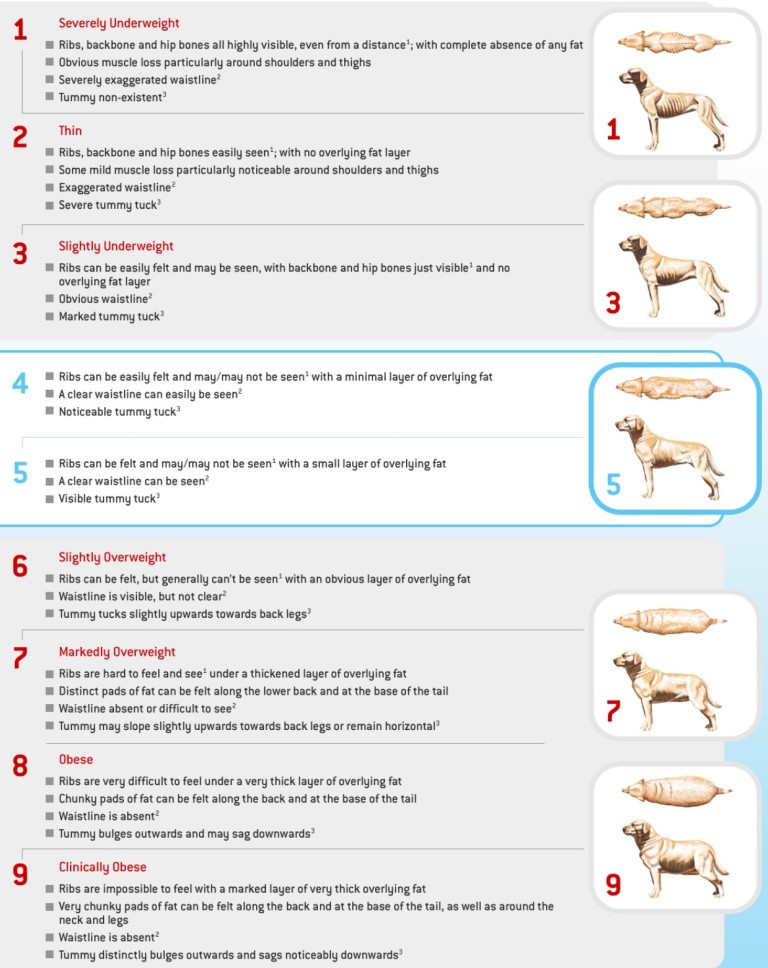These are sensible strategies for all dogs, but particularly important for dogs with the POMC mutation who are likely to be particularly obsessed with finding and eating food, and bad at stopping when they are full. They are written with a still-slim dog or puppy in mind.
A separate article giving advice about weight loss plans for overweight dogs will appear on the website soon. In the meantime, these pages are a good start. Your veterinary practice will be able to give you advice too – most practices will offer free veterinary nurse appointments for obese pets.
1) Monitor your dog – and act on the warning signs!

Observe your dog carefully.
Keep a body condition score chart like the one in the picture handy (view or download the full chart). Make it part of your routine to score your dog’s body shape at least once a month.
Condition scoring is easier for most people to measure than weight (although most vets will let you weigh your dog if you drop in). It also means you can keep track of body fat as a puppy grows or if your dog’s muscle mass is changing.
Just looking and feeling carefully is ok too, but it’s easier to lose track of your dog changing weight.
Be objective about what is a healthy weight. Look at the chart at least once so you can learn what is healthy. Owners are usually too generous to their dogs – be tough on yourself!
That way you can pick up the early warning signs of obesity and act before it becomes hard.
Make changes to feeding as soon as you notice your dog is gaining weight – it’s much easier to keep weight off than to slim down an already obese dog.
Don’t follow feeding guidelines blindly. If you feed what is recommended and your dog gains weight, cut down. Remember the packs tend to err on the side of caution so that active dogs don’t get starved – that means many pets need less.


